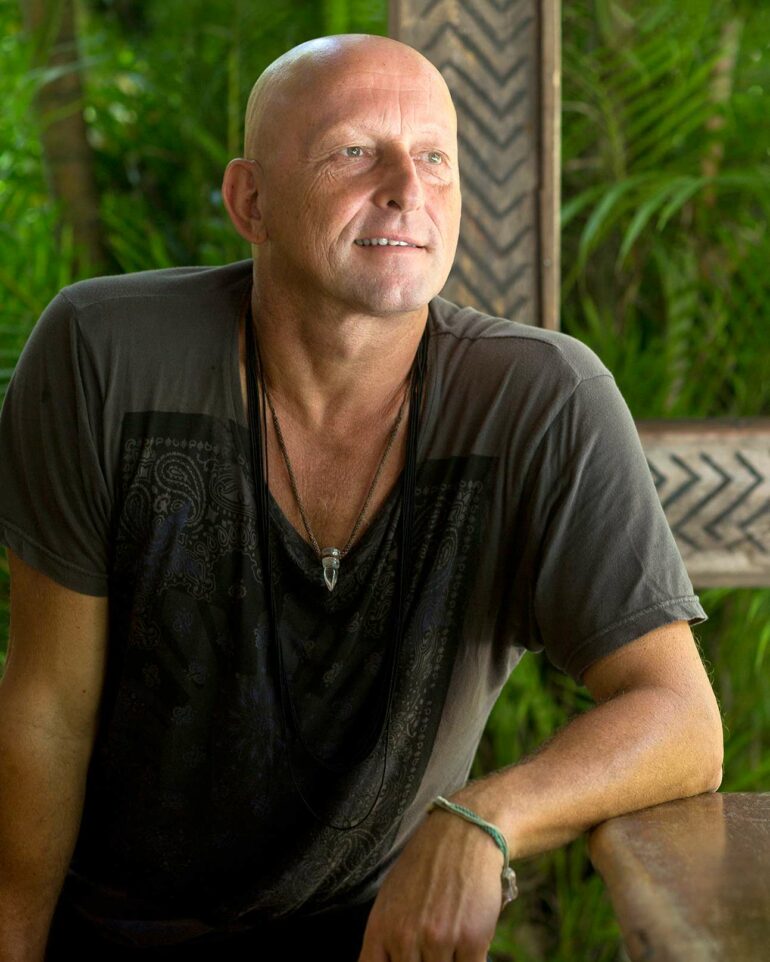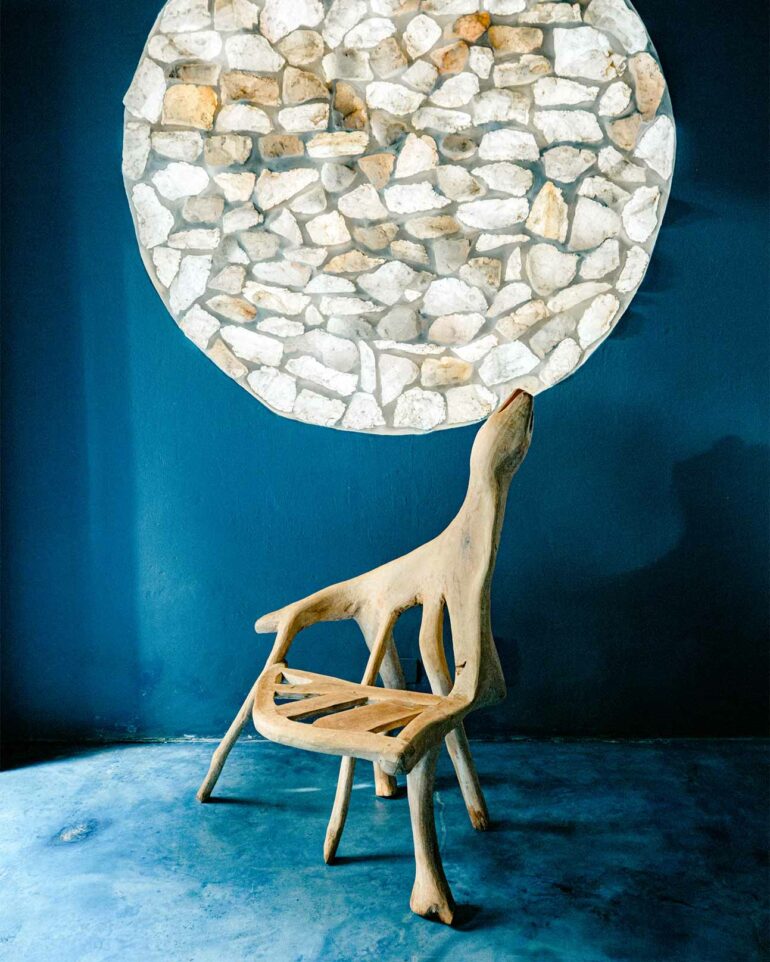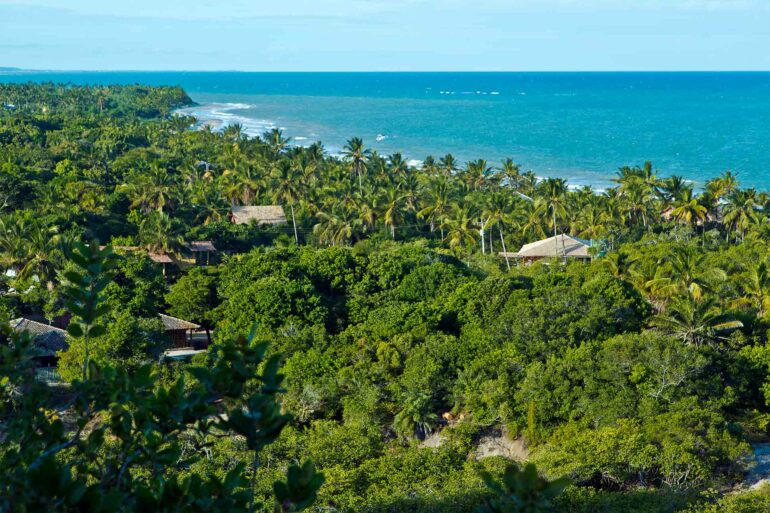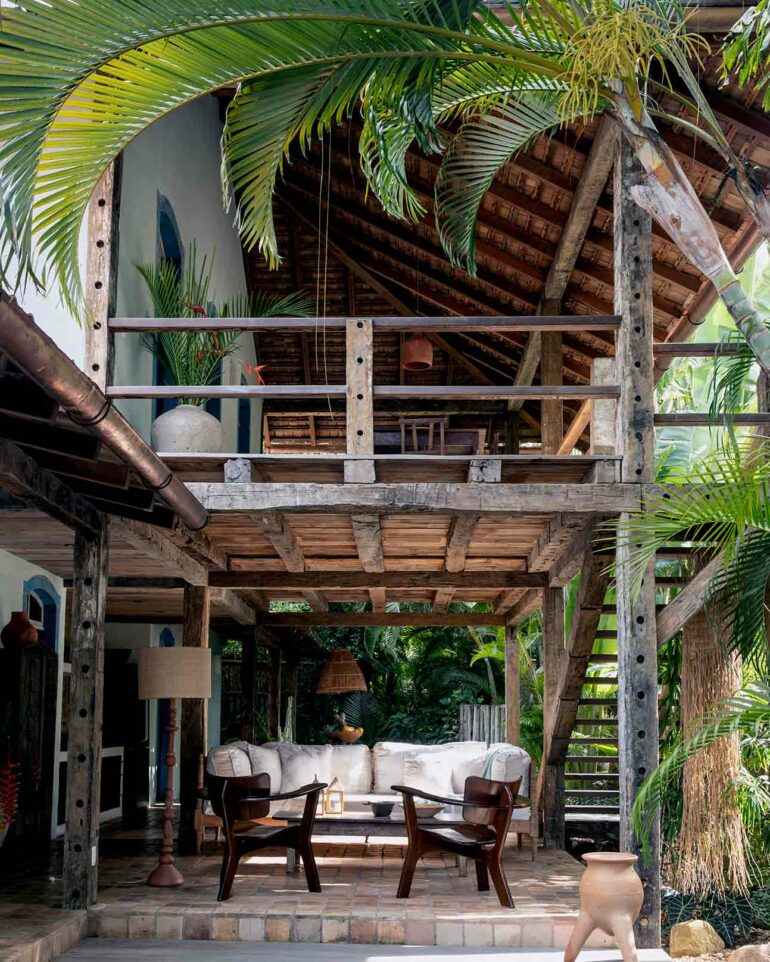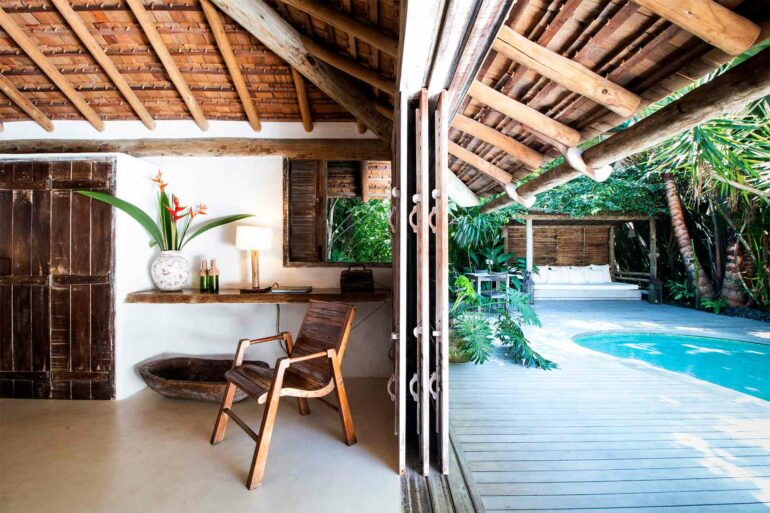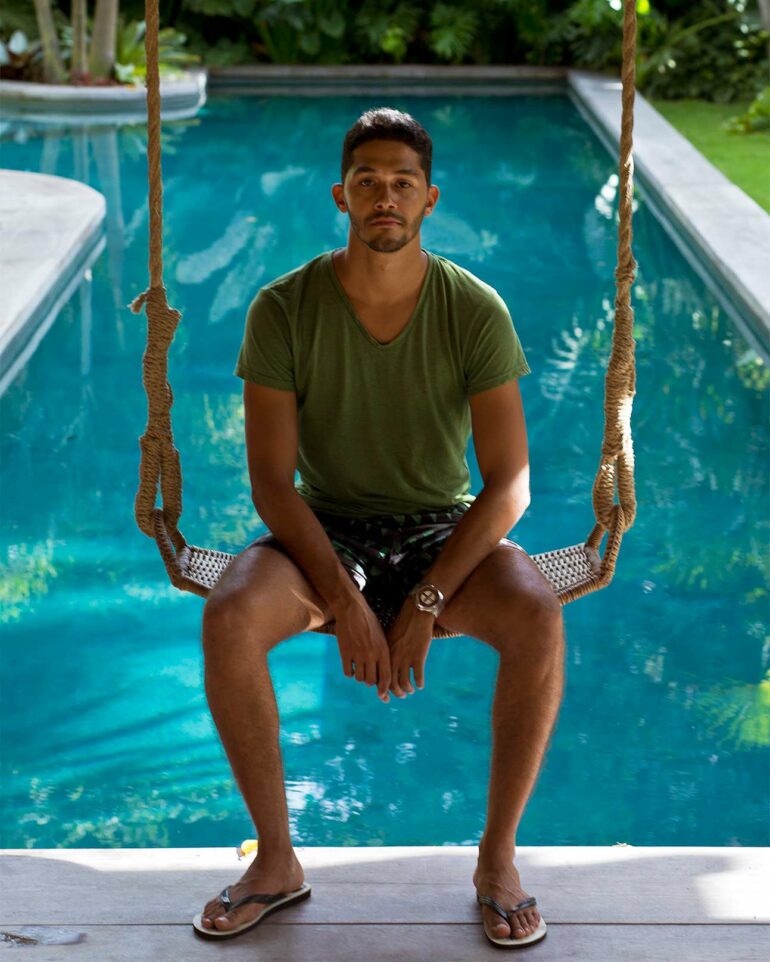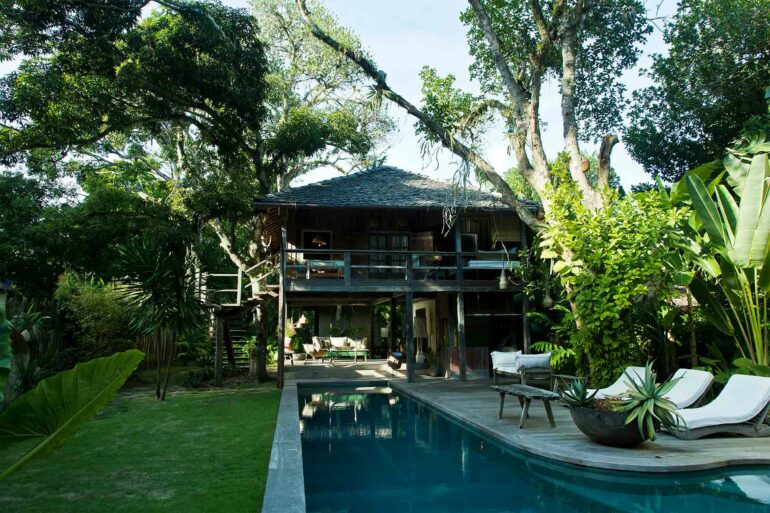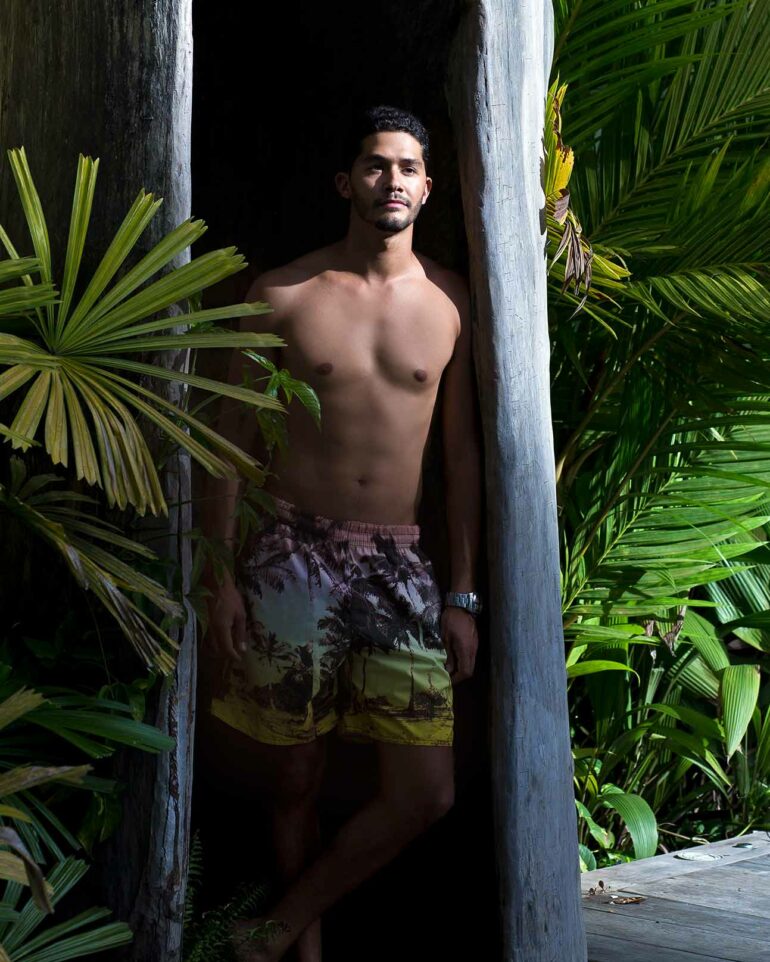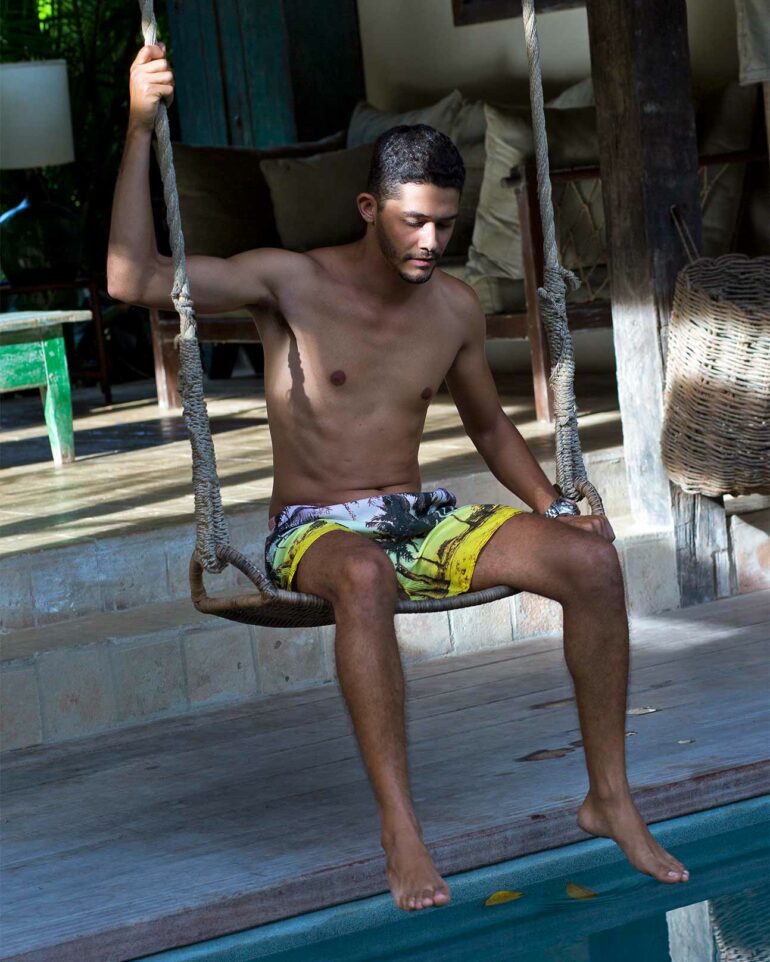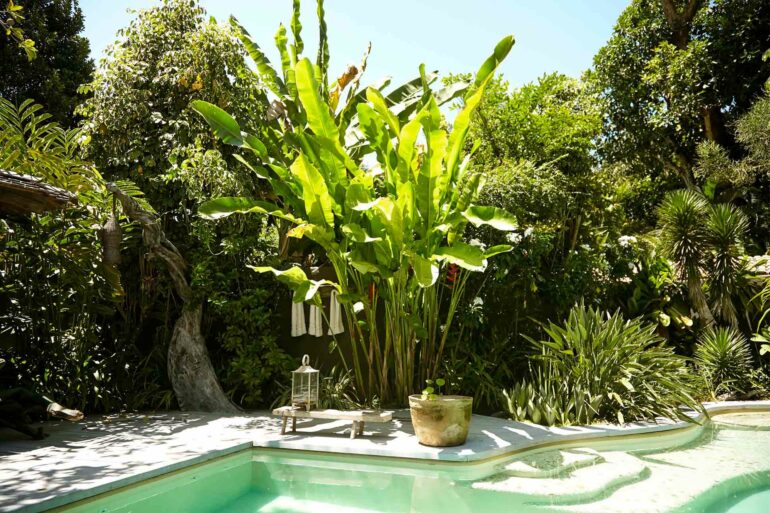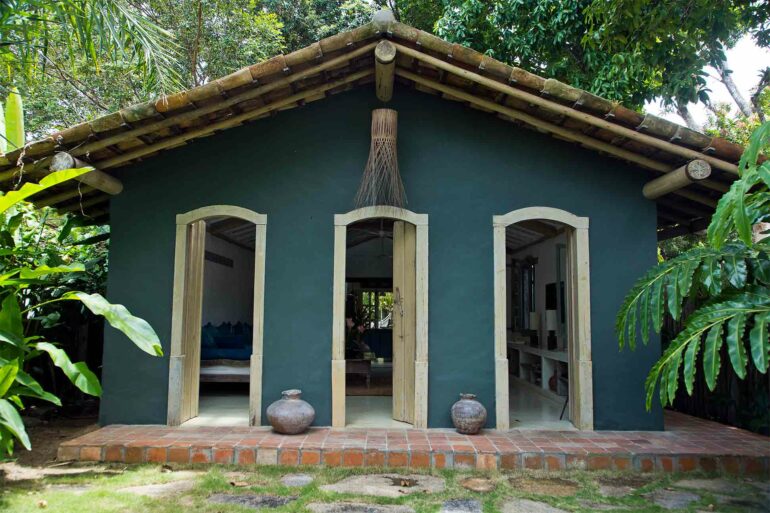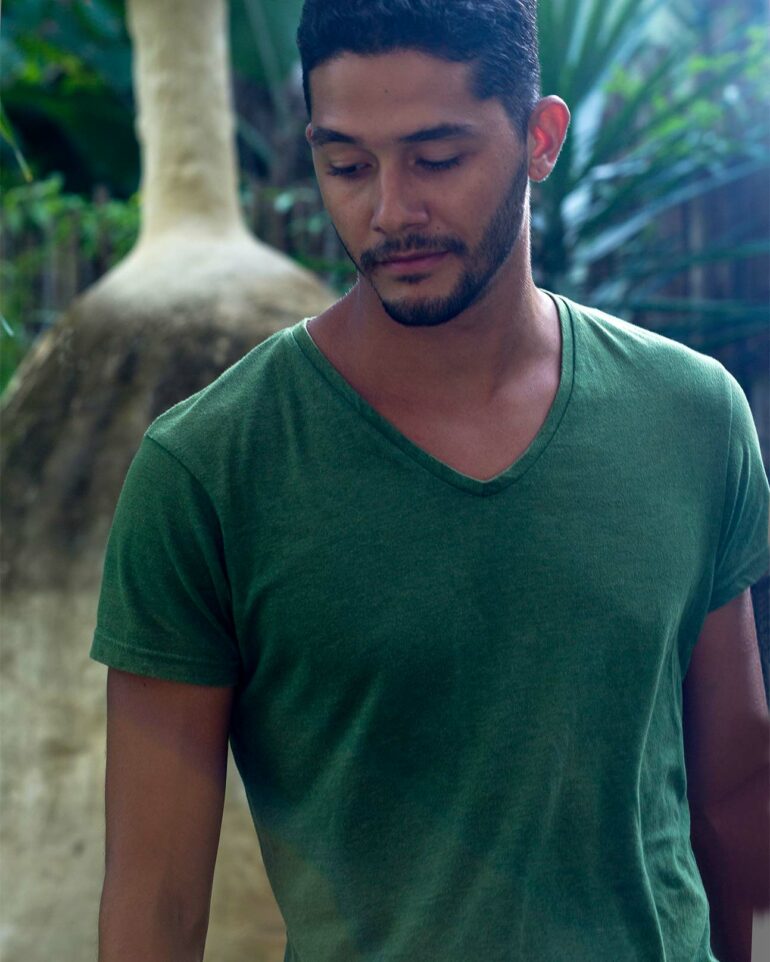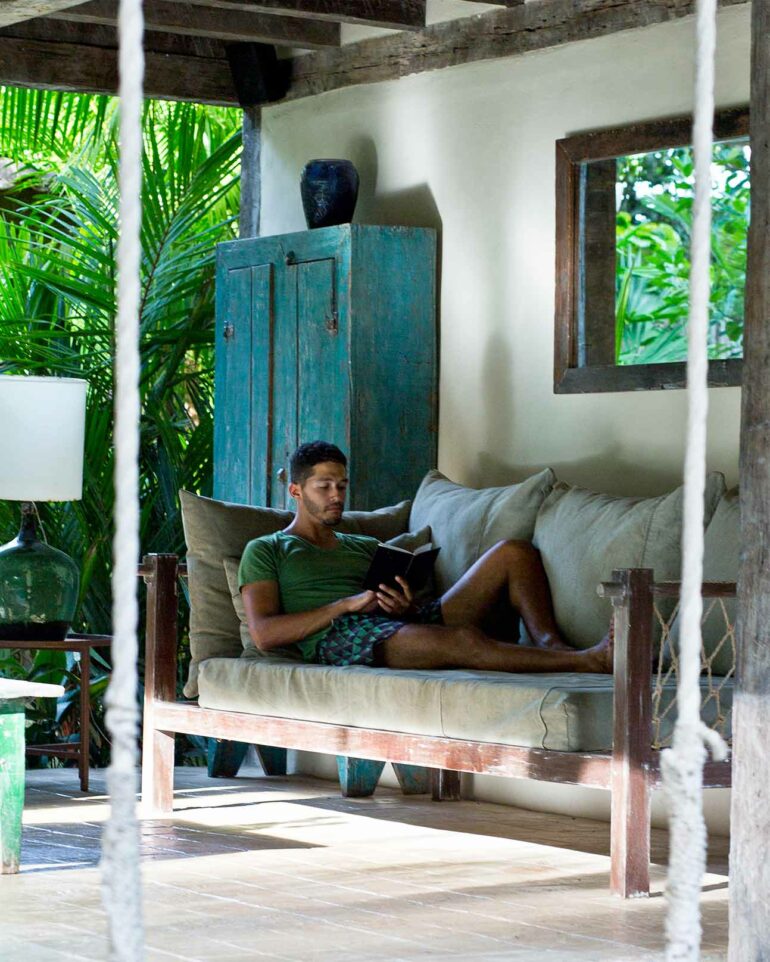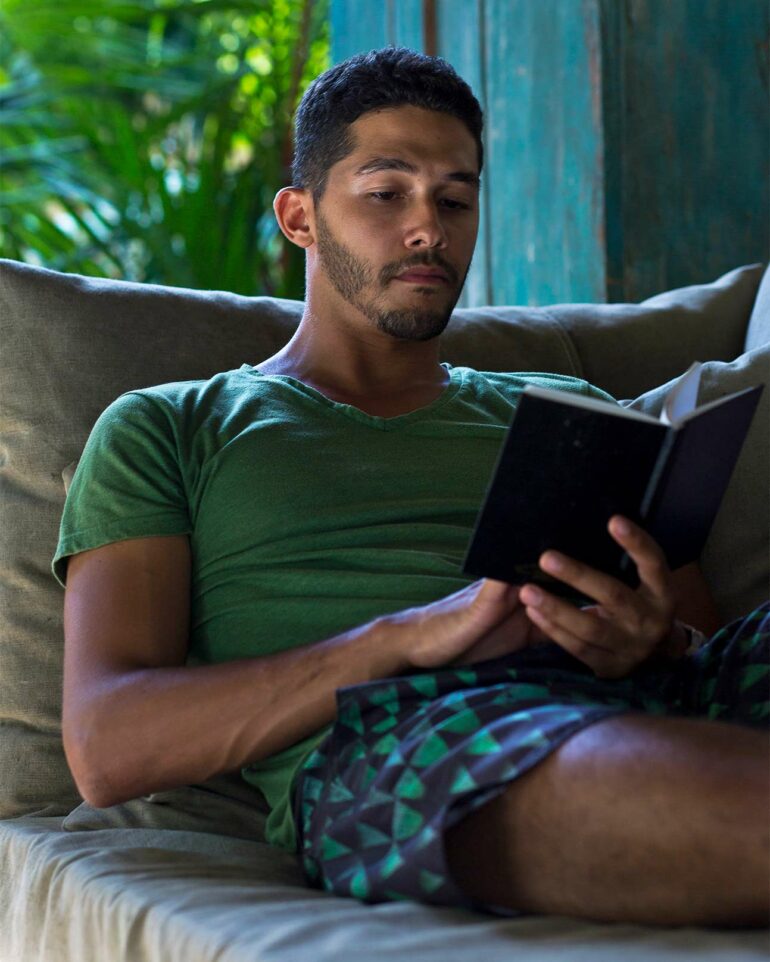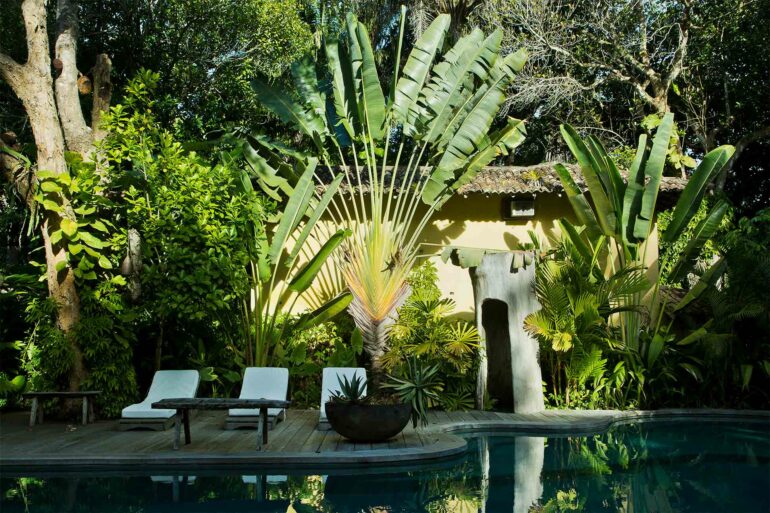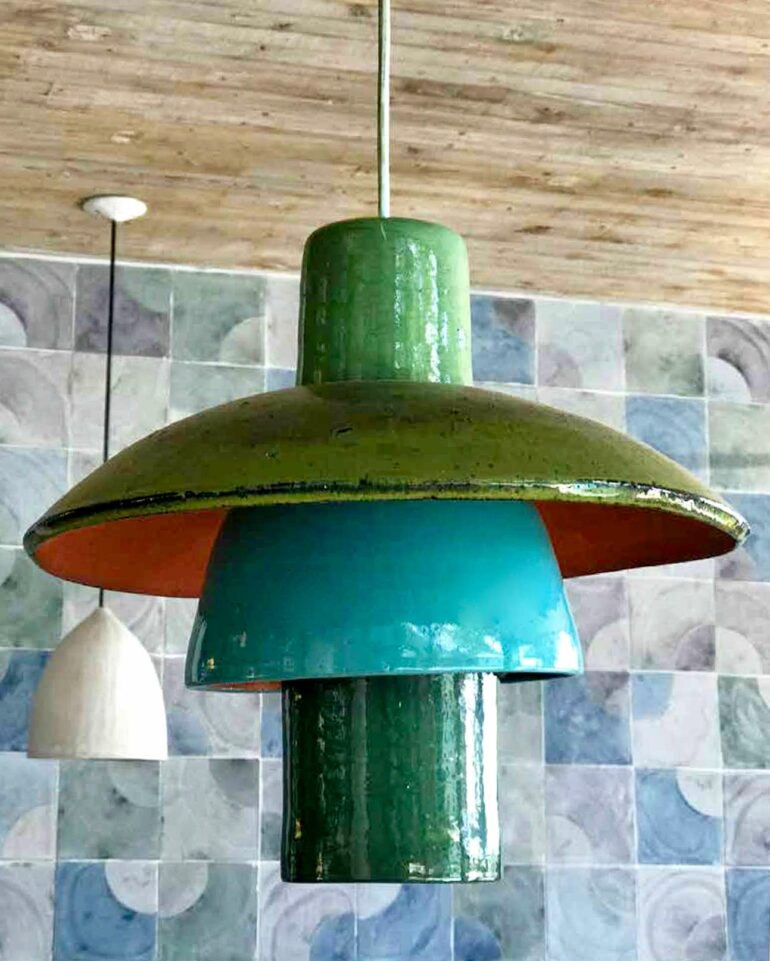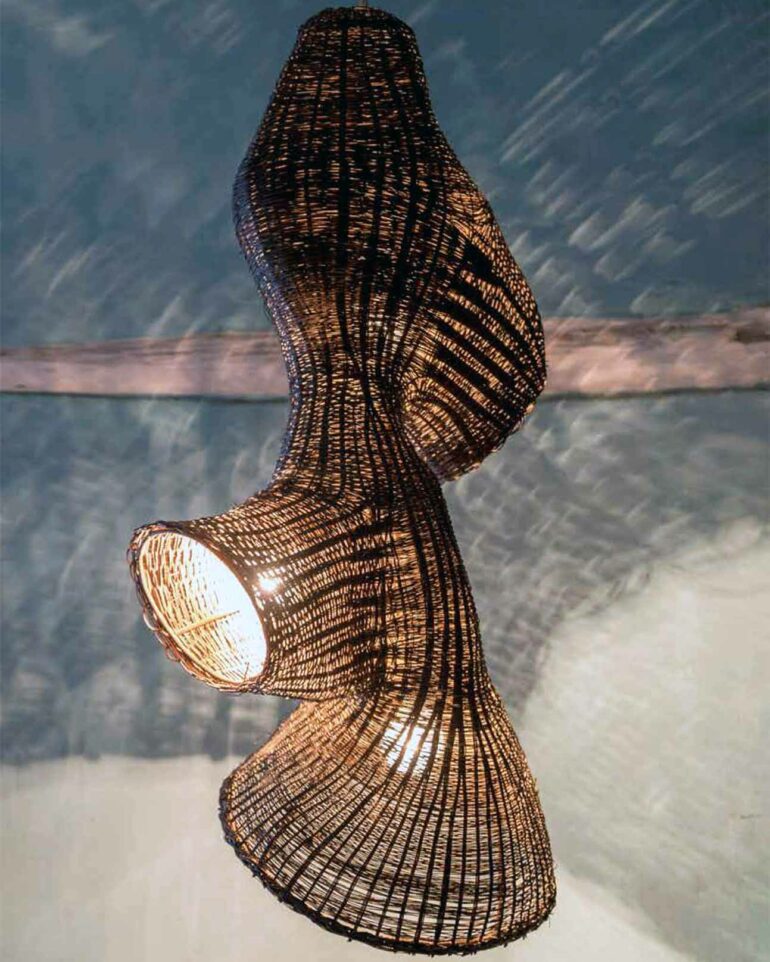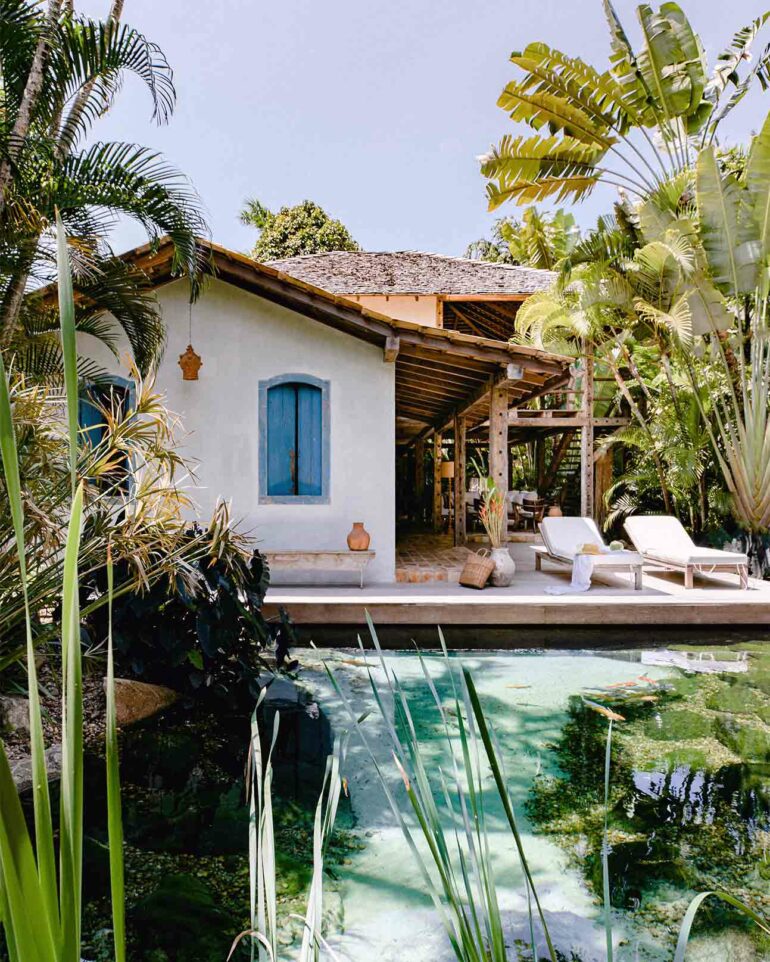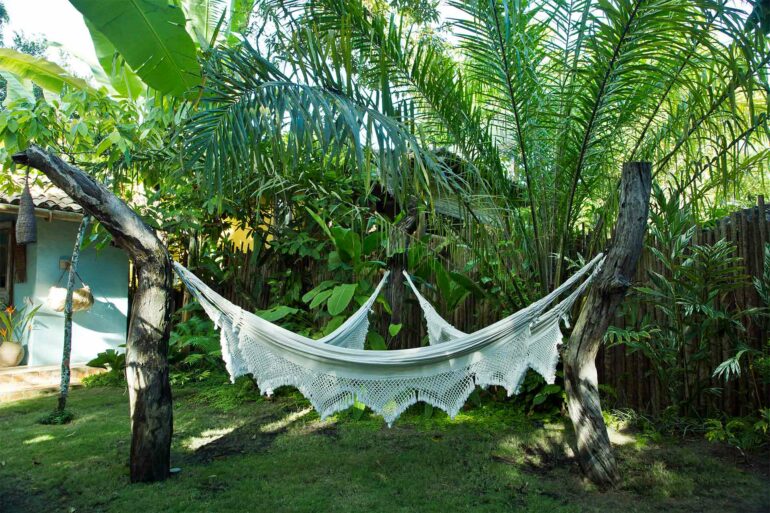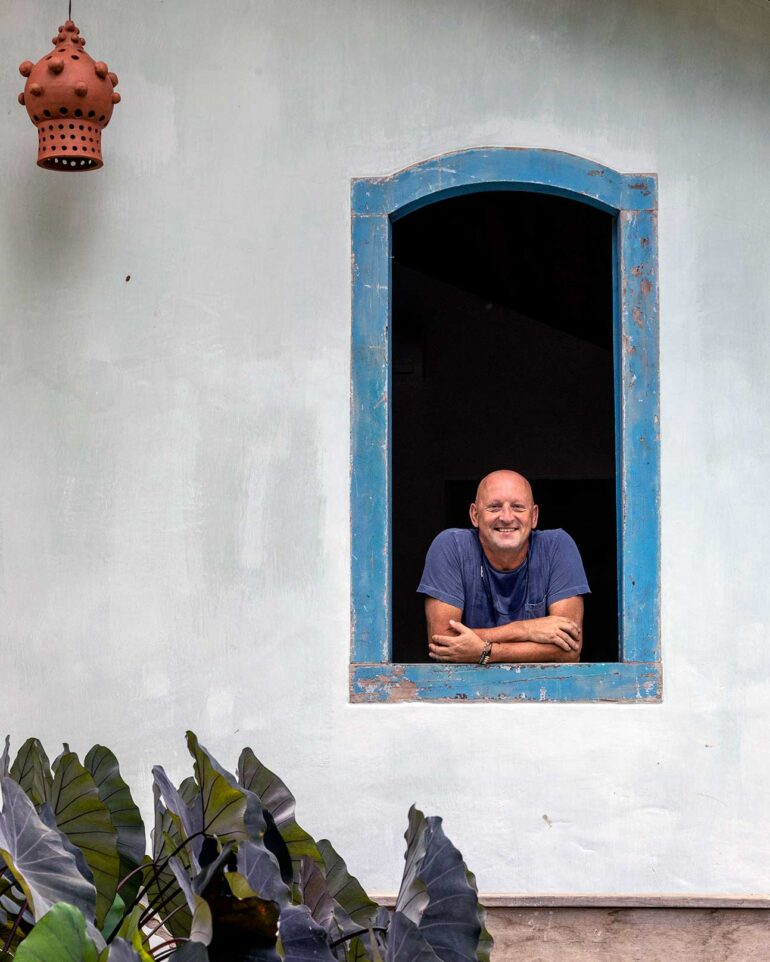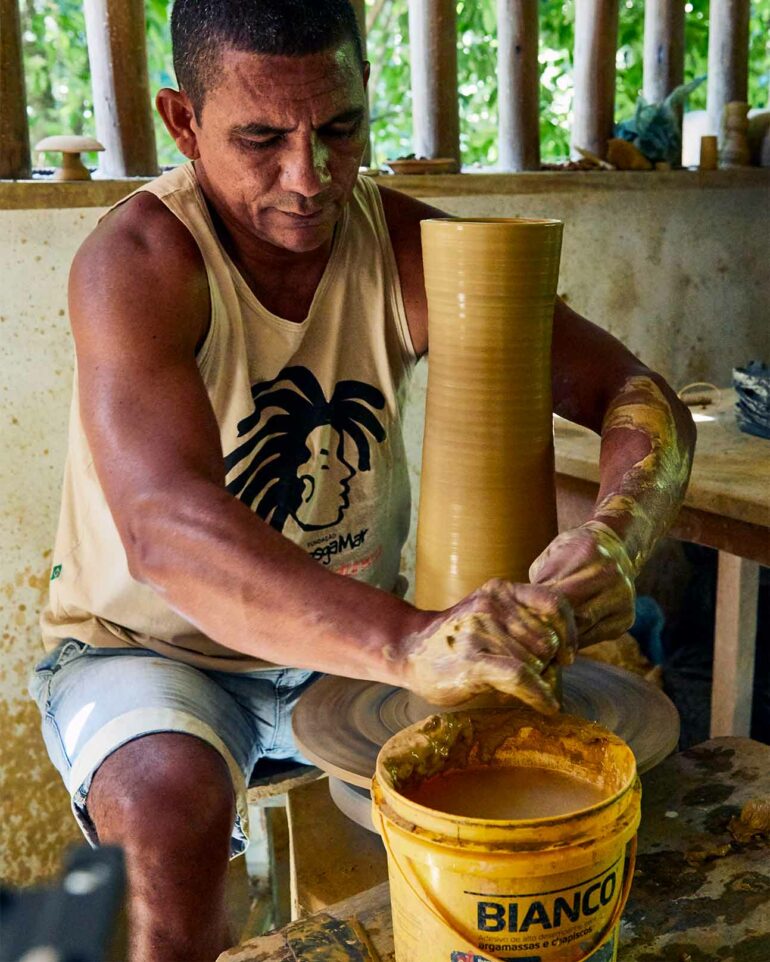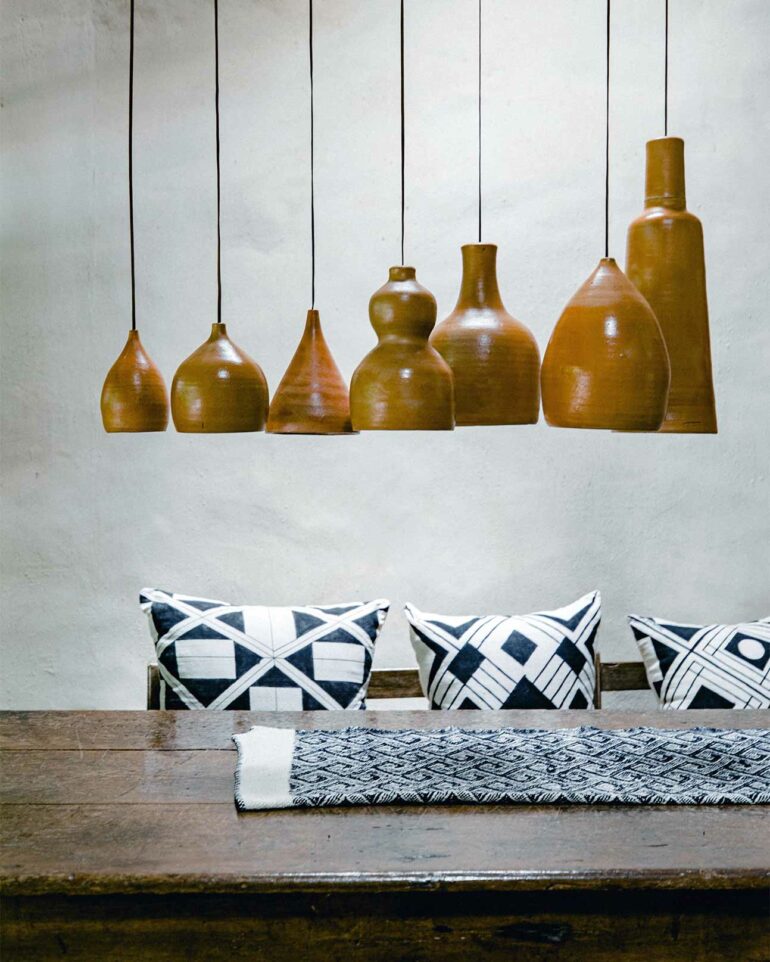Wilbert is still collaborating with most of the people he worked with from the very beginning of the UXUA project, almost all of whom now own flourishing businesses, making objects and building houses for people all over Brazil. They now in turn employ more local people. This creation of a circular economy – nurturing the skills of the local artisanal community, yet keeping sustainability, a sophisticated aesthetic and a clarity of vision that were the central pillars of the UXUA project – is something of which Wilbert is rightly proud.
“I recently collaborated with the Dutch fashion forecaster, Lidewij Edelkoort on a book about it, to share the lessons I have learnt here in Trancoso with the world.”
Wilbert’s drive to create a sustainable, socially conscious and eco-friendly business was born directly out of years working in the fast-paced world of international fashion.
“It was just insane the rate at which we were producing consumer goods. Creating UXUA is a counter-reaction to the part of my life where I was just producing and producing; oftentimes, things that perhaps that no one really needed. So when we started making the hotel, I wanted to use as many reclaimed materials and antiques as possible.”
Wilbert’s design values can be found in the day-to-day running of the hotel too. “We try to use as little plastic on the premises as possible. And we work with our neighbours to keep our environment clean. We try to recycle here – as best we can – even when the systems in place aren’t completely ready for it. What we can’t do, we teach and educate locals about as much as possible. We’ve started weaving with waste plastic and turning it into beautiful artisanal items, for example. We’re also trying to encourage local fishermen to continue with their traditional methods. In the end, I believe that it’s a combination of environmental and social factors that create a sustainable way of life. Regardless of location, I think our human impact should be minimal and we should be working to emphasise and carry forward whatever the place already has of value.”
Trancoso’s free spirit is both alluring and inspiring. The village breathes creativity and the enjoyment of life. And it didn’t take long before I too started to feel the need to create. In the space of a few days, I amassed hundreds of photographs and I even started sketching, something I hadn’t done since art school.
In the short time I was there almost everyone I met, either local or visitor, seemed to have a passion for some form of expression – be that making music, art, writing, dancing or cooking. On my daily wanders around the quadrado with my camera, I was treated to any number of seemingly spontaneous, joyful moments: local kids gathering in circles to begin a capoeira session, or groups of seniors sitting around tables playing musical instruments and singing. The place was positively buzzing with an unfettered celebration of being alive.
Trancoso’s creative energy is possibly one of the reasons why Wilbert’s energy never seems to wane. He keeps on developing and innovating. The difference between Wilbert and many hoteliers is the fact that he lives on site. And with his critical eye, there is always a desire to improve and refine.
“We don’t stop tweaking things here. For example, we moved our restaurant outside of our grounds and onto the quadrado. And we started our artist-in-residence programme, ‘Artist in Casa’ we call it, where we invite artists from all over the world to stay with us for a couple of weeks to create and make – whether it be photography or painting, sculpture or furniture design. It’s a great way to exchange ideas and enrich our environment with new pieces of art.”
Wilbert’s architectural talent, honed in building UXUA, has led to him taking on private commissions, notably for CNN anchorman Anderson Cooper and his then partner Benjamin Maisani. The couple first visited as guests, but fell in love with Trancoso and the UXUA experience so much that they commissioned Wilbert to design and build their dream house there. The result is an ambitious set of four structures and gardens stretching some 80 metres back from the quadrado. Each structure explores a different element of the region’s architectural heritage. Set at the front, near the quadrado, the house’s indoor living area and kitchen are in the old colonial style. Behind it is a bedroom suite created with an antique ‘pau a pique’ (wattle and daub) technique; a third suite echoes the local fisherman’s style of the past century. The final structure overlooks the forest and is raised with a pool lounge tucked below it. It was made entirely with reclaimed wood in an open, airy design featuring a huge mezzanine. I was lucky enough to stay in Casa Anderson, which forms part of the UXUA portfolio (when Anderson is not in residence, of course), and I must admit that I found it very hard to leave.
First flora: UXUA is rich in native plants – “the stranger, the better,” says Wilbert, who admits his grounds are becoming “something of a garden of Eden.”
Last year, Wilbert finally got around to building his own house, based upon the same signature principles of architectural experimentation as he applied to my home-from-home.
“I built Casa Anderson around existing vegetation. For my house, it’s the same; the historic quadrado district’s largest jackfruit tree is framed by a kitchen beside the living area, an enchanting setting.” As with Casa Anderson, the main source of materials was an old Bahian farm. All its original, old Brazilian hardwood doors and windows and even ceramic roof tiles were reclaimed and repurposed. But, with his own house, inspired by the building materials, Wilbert took quite a different approach and recreated something of a farmhouse. It’s a single building, instead of four separate ones, with four bedrooms and is set in 500 square metres of tropical gardens. In Wilbert’s signature style, the interior and exterior spaces are interconnected. “I wanted the kitchen, outdoor living area and pool to all have this close proximity where – even if they’re very spacious – anyone in them can still connect with each other. We cook a lot, and as in Bahia, cooking is a really social event in my house. The cooking area has the feel of a DJ booth with giant windows opening onto a long counter-bar that overlooks the sofas of the living area. When we cook, we listen to music and chat with others in the living area and watch the swimmers.”
You’d think that with all his projects, Wilbert has plenty on his plate. But his creativity knows no bounds. He is currently working on a 3,000-acre resort development comprised of three hotels on Mexico’s beautiful and pristine Costalegre. It will include its own ‘pueblo’ with a church, school and park.
He has also been working on more private homes, including a house called Casa Cajueira, which overlooks both Trancoso river valley and the Atlantic ocean. True to Wilbert’s design ethos, these houses are also decorated with UXUA-like handmade furniture, ceramics, lamps and soft furnishings, some of which are made on-site in the hotel on two antique looms.
For those of us not fortunate enough to commission our own Wilbert Das casa, he has launched UXUA D.A.S., an online atelier of exquisite furniture and soft furnishings. I must say I’m tempted. Bringing a piece of Wilbert’s UXUA dream into my home would serve as a beautiful reminder to tread lightly and to strive to balance work with the joy of living.
www.uxua.com | www.uxuadas.com
Photography courtesy of UXUA Casa Hotel & Spa and by Martin Perry


